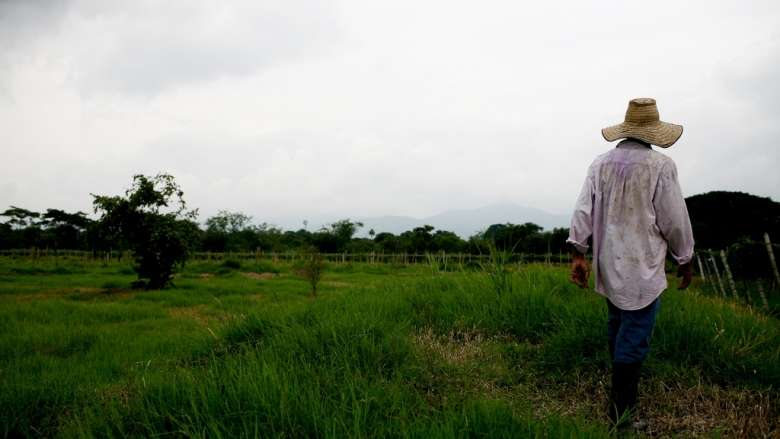Challenge
Colombia has witnessed decades of violence in which land and territory were central to the conflict. In the late 1980s, the conflict escalated with large numbers of rural dwellers displaced and peaking in 2002 at 447,429. All told, it is estimated that some three to five million people were displaced during the conflict. In 1997, the government of Colombia passed Law 387, the first comprehensive law adopting measures for the prevention of forced displacement and addressing the multiple challenges faced by its internally displaced citizens including the loss of their productive assets. The government’s efforts continued with the passage of the Victims and Land Restitution Law of 2011, creating the formal framework for restitution of land to IDPs.
Solution
The project was designed to respond to the need for enforcing the Law 387 on prevention of forced displacement and protection of IDPs. The objective of the Project through its three phases (2002-2014) was to diminish the risk of impoverishment of the displaced population and support the peace-building process by promoting measures for protection of land and other physical assets of IDPs. The objective had three parts: protection, formalization (i.e. titling) and restitution with the overall goal of supporting IDPs and the peace-building process. Over the course of 12 years, the project employed a range of activities to support this objective including systematic data collection to provide evidence of the magnitude of the conflict over land and record hectares actually abandoned – for the first time in the country. The Project also funded a range of research to address specific land tenure issues. Many of these studies were instrumental in fostering public discussion and policy change. Finally, the project built the knowledge base and policy support for a Restitution Law, finally passed in 2011, which provided for physical restitution to IDPs of their land parcels.
Results
Key results include:
- Restitution Law: The project experience was key when designing the Restitution Law and the three complementary decrees on ethnic minorities (Indigenous, Afro-Colombians and Roma).
- Data base: The project provided detailed information on IDPs in Colombia. This was important to understand the urgency to protect and restitute IDPs. Documentation is available in the webpage of the LRU: www.restituciondetierras.gov.co
- Protection: The cumulative target set for the three phases of the project was 136,000 rights protected; by the end of 2011 173,756 rights were protected. Implementation activities of the different routes for protection covered 300 municipalities.
- Formalization: Formalization activities covered nine regions by the end of 2011. Special procedures for titling to possessors and occupants were designed and 1,194 titles were issued to occupants.
- Restitution: Since the creation of the LRU the project supported the establishment of 24 land restitution units throughout the country. Until the end of the project in 2014, the LRU received 72,623 requests for restitution processed 25,406 of the requests, and 1,852 cases have been decided by judges.
- Training: A total of 109,430 IDPs and 8,178 community leaders of ethnic minorities received training and information on protection and restitution.
- Women and ethnic minorities: The project developed differential processes for women and ethnic minorities for protection and restitution. At the end of the project 40% of the claimants were women. The LRU designed a “Programa especial para las mujeres, niñas y adolescentes”. The present Restitution Law includes special procedures for women.
Bank Group Contribution
In the first phase of the project funds totaled US$1,769,136 from three donors and in phase II the project received funds from 10 donors (national and international) for a total of US$17,862,500 in parallel financing. The contribution of the State and Peace Building Fund ranged from US$800,000 in Phase 1 to US$ 6.0 million for phase III.
Partners
Given the importance of land rights protection and restitution for the peace-building process in Colombia, the project received support from several international agencies and evolved into a multi-donor operation (ten national and international donors). Main donors include the International Organization for Migration ($416,739); USAID (2.9million), European Commission ($2.45 million), and the Swedish Development Cooperation Agency ($3.7 million). The SPF and the World Bank were crucial in providing the initial funding and continued donor coordination. The government also contributed through its Social Action Fund ($6.86 million).
Moving Forward
The Law Restitution law was a key result of the Project supported over three phases and 12 years. The Restitution Law gives continuity to restitution activities under the lead of the government’s Special Administrative Unit for Land Restitution, which is fully financed by the government.
